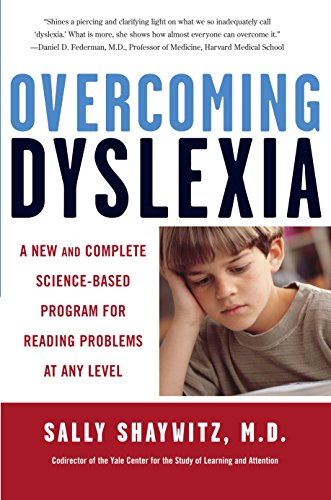From Dr. Hart: Overcoming Dyslexia is sort of the Ground Zero of accessible texts that help parents (and educators, for that matter) in the process of discussing Dyslexia and understand what dyslexia is and what we can do to support our students who struggle with reading. Although published in 2004, Dr. Shaywitz’s book remains very relevant and should be a part of every person’s library who either raises or works with our dyslexic children. It is a classic.
Audience: Parents and Educators
Skill-level: Early Stage
About Overcoming Dyslexia

From one of the world’s leading experts on reading and dyslexia, the most comprehensive, up-to-date, and practical book yet to help us understand, identify, and overcome the reading problems that plague American children today. For the one in every five children who has dyslexia and the millions of others who struggle to read at their own grade levels—and for their parents, teachers, and tutors—this book can make a difference.
Drawing on recent scientific breakthroughs—many of them in her own laboratory—Dr. Shaywitz demystifies the subject of reading difficulties and explains how a child can be helped to become a good reader. She discusses early diagnosis in young children as well as the diagnosing of older children, young adults, and adults. Dr. Shaywitz explains why some bright adults can read only very slowly, and what they can do about it. Her book makes clear how the latest research, including new brain imaging studies, is uncovering the mechanisms underlying dyslexia and has led to effective treatments for each age group.
Dr. Shaywitz instructs parents in what they can do year-by-year, grade-by-grade, step-by-step for a dyslexic child. She lays out a home program for enhanced reading; guides parents in choosing the best school for their child and in working with teachers; and suggests ways of raising and preserving the child’s self-esteem. She provides exercises, teaching aids, information on computer programs, and many other invaluable resources.
In addition, her book corrects such popular (and harmful) myths as the belief that dyslexia is primarily a male problem, that children with dyslexia see words backward, that dyslexia is linked to intelligence. She shows us how, although dyslexia cannot be outgrown, its effects can, with careful planning and hard work, be overcome.